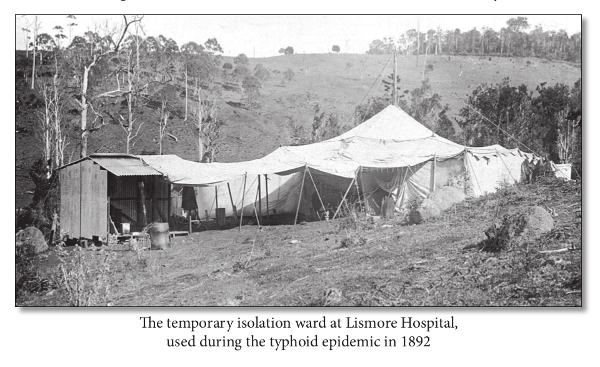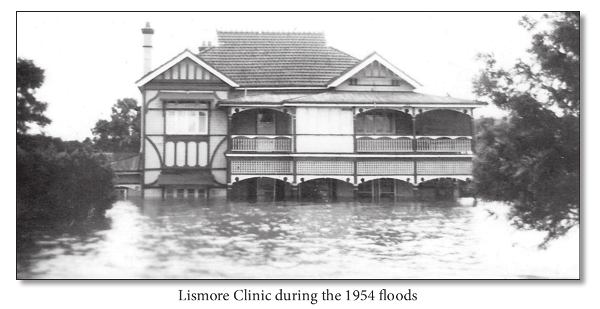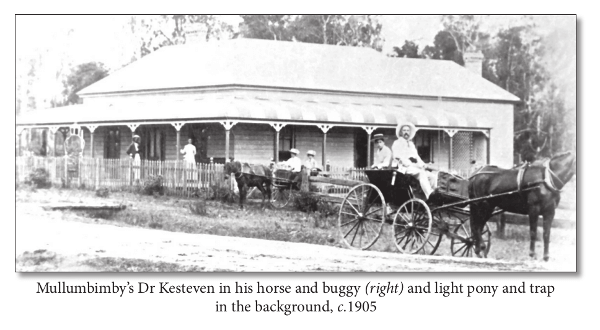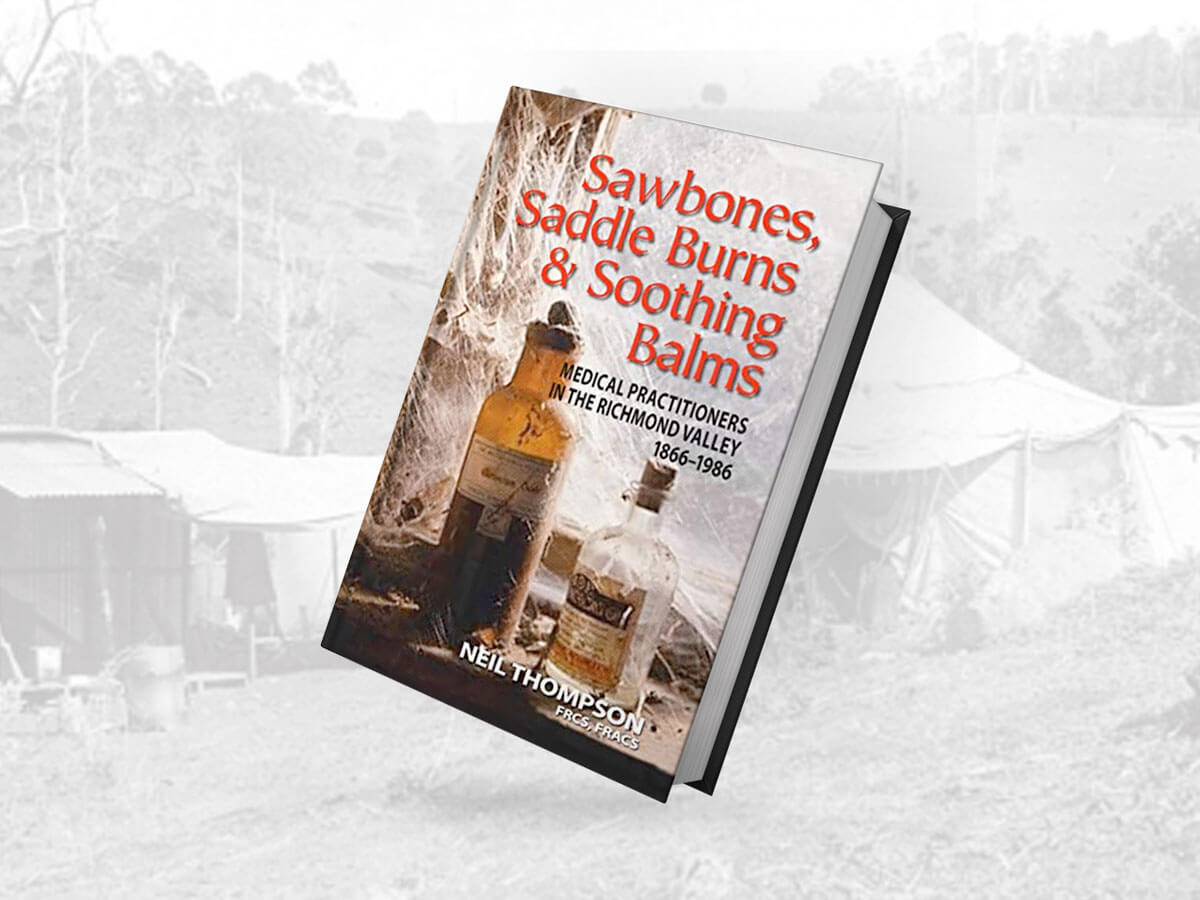Former Lismore orthopaedic surgeon, Dr Neil Thompson has written the early history of the the local medical fraternity. Sawbones, Saddle Sores & Soothing Balms covers the 120 years from the arrival of medical practitioners in 1866 to the modern era.
Neil Thompson’s fascinating book, first published four years ago, has recently been released as an Amazon kindle ebook, a format that will enable the stories of the medical pioneers of the region to reach a much wider audience.

Each chapter is devoted to one of the sixteen towns in the local area, detailing the travails and contributions of each town’s medical practitioners in chronological order.
Various themes emerge. Life for the early medicos, like their patients, was difficult, lonely and often short. In the two major townships of the day, Coraki and Casino, there might be a colleague one could call on in times of need. Mostly, however, the local doc was on his own delivering babies, treating surgical conditions and coping with major trauma.

In those early days there were no hospitals, not much in the way of anaesthetics and sterilization was a novel concept. A good surgeon was quick and had a strong arm, an attribute he shared with his anaesthetic assistant. Appendicitis and peritonitis could prove as fatal for the doctor as his patients. Perinatal mortality was 20%.
Snakebite, drowning and being thrown from a horse could easily strain the practitioner’s therapeutic armamentarium.
Infections were common, with epidemics of measles, smallpox, Spanish flu, bubonic plague and typhoid sweeping through the community at various times. Death from tuberculosis or pneumonia in your 30s was not a rare event, even for the medical staff and their families.
Getting started in practice was as challenging then as it is now, although the problems were somewhat different. There were no regulators to satisfy and getting a Medicare prescriber number was a thing of the distant future. Rather it was often simply a matter of hanging up your shingle.
Some established their rooms in the local hotel. While this attracted early custom it could have unintended consequences. Thompson quotes the obituary of one, who succumbed to “that cordial that destroys both soul and body of men”. Suicide claimed others.
Prior to antibiotics vaccinations were one of the few things that could be done to reduce the death toll. Smallpox and varicella lymph inoculation clinics were run with serum shipped up (literally) from Sydney. Life was simpler when hepatitis B and conscientious objectors had yet to be invented.

The early records noted that many doctors of the day enjoyed their sports. As towns developed, swimming, fishing and horse riding gradually gave way to tennis, golf, hockey, running, sailing and surfing. Even to this day many local practitioners will try to attend a “Board Meeting” at least once a week.
The early medical practitioners were often prominent in their town’s local musical groups and gardening societies. This tradition too has continued across the generations with local doctors Jimmy Chiu playing regularly in the band Acid Bleed and the late Tex Miller famous for his “banjo plucking” at the Lismore Golf Club with his “Pally’s Players”. Psychiatrist Harry Freeman, who came to the area for the Aquarius festival, still entertains with a hot jazz piano.
The local doctor, an eminent citizen of the town, would be expected to attend the town’s balls and dances. He would be an honoured guest at the annual show. Occasionally he might be called upon to perform the professionally dangerous job of judging the baby competition.
The doctors of the day were early adopters. Horseless carriages were an innovation in transport and often doubled as the early ambulances. However, the thrill of speed went to their heads on occasions. In Ballina in the early 1900s Dr John Sanderson was fined by the Inspector of Public Nuisances for “driving his car around a corner of the road at faster than walking speed”. In 1908 in Lismore Dr Oscar Muller, driving his dark-red Russell, “was charged with driving at the breakneck speed of more than six mph and fined ten shillings and costs”.
Dr De Luca was one of the pioneer flying doctors. He spent several months “building a monoplane which he ‘essayed to fly’. After taking to the air in graceful fashion, at about twenty feet it suddenly turned turtle, fell and was completely wrecked”. He survived the crash which tragically was not the case for a later Casino medical aviator.
Many of the medical fraternity responded to the call to public service. Four of them were mayors of their local towns. In the early 1930s Dr Jabour of Casino and Dr Kellas of Lismore were simultaneously mayors of their respective communities. A weir is named after the former, a street after the latter.
Many of the doctors served overseas during the World Wars, taking leave from their practices for several years. Tragically Dr John Oakeshott was captured in the fall of Singapore and died several years later in Borneo on the Sandakan Death March.
Upon retirement Malcolm Tester, a Lismore ophthalmologist, following the example of world renowned Dr Fred Hollows, undertook several eye missions to India and the Solomon Islands. Lismore surgeon Dr Dave Thomas was a medical officer to the Surf Life Saving Movement. He ran voluntary skin clinics at Byron Bay beach every December-January holidays until he tragically lost his own life to melanoma in 2000.

For some early practitioners doctoring was a family tradition. Canadian doctors Josiah and Margaret Corliss were the first medical practitioners in Bangalow and provided medical care throughout the region. They were accompanied by their two medical sons, Philip and Charles Corlis who established their practice in Ballina. The family tradition was carried on by Charles’ son Wilson Corlis who was a surgeon in Lismore from the mid 1930s until the end of the war.
Other father and son doctors in the area were Frederick William Buddee who started practice in Bonalbo in 1927 and his son, also F. W. Buddee, a respected Lismore surgeon and community member. Similarly Archelaus Opie and son Jim provided medical services to the North Coast for over 50 years and Robert Oakeshott, the son of John, worked as a surgeon at the Keen Street Clinic for several years before moving to Perth.
Present NRGPN Chairman Nathan Kesteven, traces his medical roots back to Leighton Kesteven his great great grandfather in the early 1900s. English born and trained at St Bartholomew’s he worked in Fiji and Lismore before becoming the first medical practitioner in Mullumbimby.

Over the years many doctors came to the North Coast, attracted by the scenery and the lifestyle, and decided to stay. Instrumental to attracting new doctors in the 1970s and 1980s was Lismore Base Hospital Clinical Superintendent Ray Gordon. Thompson reports that one of the more frequent answers to the question of why new doctors came to Lismore was that they had met Ray Gordon somewhere or other and he told them of the attractions of his home town.
It is true that not all the medical practitioners of the North Coast have been of good repute. Francis Hankey, “a medical man of Wardell”, was a serial fraudster and over the years was found out repeatedly. He appeared before the magistrate in Wardell, Casino, Lismore and Grafton. Most of his medical training probably occurred during his time in Darlinghurst, Maitland and Port Macquarie jails. However, “‘Dr’ Hankey’s treatment for painful conditions” was a marketing success and almost irresistible to his long suffering patients.
Lismore hospital opened in 1883 when the town’s population was 473. The town had been gazetted only seven years earlier in 1876 having previously been known as “Sleepy Hollow”. In those early days the relationships amongst the local doctors and between the doctors and the hospital boards were not always harmonious. Arguments with medical “squatters” and rogues, charlatans and con men would episodically cause havoc. It would have been almost enough to make them want for modern institutions like provider numbers and the AHPRA.
There are dozens of other colourful doctors who have served the people of the Richmond Valley over the last 120 years. Neil Thompson’s book gives us a glimpse into our distant history and offers some guides on how best to serve our community in the future.
The book is available from Amazon as a Kindle app for mobile phone and tablets. The many pictures in the book prevent it from displaying on the web or the native Kindle device.
It retails in Australia for $11.99.







